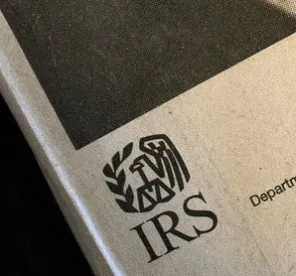Background
On May 23, 2019, the Internal Revenue Service (IRS) and the Treasury Department issued final regulations (the Final Section 956 Regulations) intended to mitigate the impact of Section 956 of the Internal Revenue Code (the Code) for certain domestic corporations. Consistent with the proposed regulations issued in November 2018 (see previous GT Alert here), the Final Section 956 Regulations align the application of the deemed income received under Section 956 with the participation exemption created under Section 245A of the Code, enacted by the 2017 Tax Cuts and Jobs Act (P.L. 115-97).
Prior to enactment of Section 245A, both actual and Section 956-deemed dividends that arose due to certain investments in U.S. property were included in the income of a domestic corporation and taxed symmetrically. The enactment of Section 245A provides for a participation exemption regime pursuant to which a 100 percent dividends-received deduction (DRD) is available to a corporate U.S. shareholder with respect to dividends received from the untaxed earnings of a “specified 10-percent owned foreign corporation” that are actually distributed to the shareholder. A specified 10-percent owned foreign corporation is any foreign corporation (other than certain passive foreign investment companies) with respect to which a domestic corporation owns at least 10 percent of voting power or value. Thus, a specified 10-percent owned foreign corporation includes a controlled foreign corporation (CFC) with respect to its corporate U.S. 10 percent shareholders. Contrary to the provisions of Section 245A, a Section 956 inclusion of a corporate U.S. shareholder of a CFC was not eligible for the DRD, thus creating unequal treatment between actual and deemed repatriations.
General Rule
To provide consistent treatment of the taxation of actual dividends and amounts “substantially the equivalent of a dividend,” the Final Section 956 Regulations preclude the application of Section 956 to corporate U.S. 10 percent shareholders of a CFC. Specifically, the Final Section 956 Regulations provide that the amount of income inclusion determined under Section 956 (Tentative Section 956 Amount) will be reduced for a corporate U.S. 10 percent shareholder of a CFC to the extent the shareholder would be eligible for a DRD under Section 245A if the shareholder had received an equal amount of an actual dividend from the CFC (Hypothetical Distribution).
Section 956 will continue to apply to individuals who are U.S. 10 percent shareholders of a CFC. Further, Section 956 will continue to apply to other U.S. shareholders of a CFC that are not eligible for a DRD under Section 245A, such as regulated investment companies and real estate investment trusts.
Application to Domestic Partnerships
A domestic partnership that is a U.S. 10 percent shareholder of a CFC may have partners that are a combination of domestic corporations, U.S. individuals, and other persons. The Final Section 956 Regulations clarify that with respect to such a domestic partnership the Tentative Section 956 Amount is reduced to the extent that one or more domestic corporate partners would be entitled to a DRD under Section 245A if the partnership received such amount as a distribution.
Any remaining Section 956 inclusion amount of the domestic partnership will be allocated to the partners in the same proportion as net income would result to the partners upon a Hypothetical Distribution from the CFC to the domestic partnership.
Application to CFCs with Previously Taxed Earnings and Profits (E&P)
The proposed regulations did not provide any guidance with respect to CFCs with previously taxed Section 956 E&P (Section 956 PTI). If a CFC has prior year Section 956 PTI and a current year investment in U.S. property, the Hypothetical Distribution equal to the current year investment in U.S. property would be allocated first to the Section 956 PTI, which would not qualify for a DRD under Section 245A. As a result, any Tentative Section 956 Amount would not be reduced under the general rule, as discussed above, and corporate U.S. 10 percent shareholders would have a Section 956 inclusion equal to the Section 956 PTI.
The Final Section 956 Regulations address this issue by modifying the ordering rules under Section 959, such that the Hypothetical Distribution would be first attributable to the Subpart F PTI and then to untaxed E&P but not to the Section 956 PTI. The Hypothetical Distribution allocable to the Subpart F PTI would not be eligible for a DRD under Section 245A; thus, the Tentative Section 956 Amount would not be reduced by the amount of the Subpart F PTI, which would seemingly result in Section 956 inclusion. However, the ordering rules under Section 959(c)(2) and Section 959(f)(1) provide that any Section 956 amount would be sheltered to the extent of the amount of Subpart F PTI. The application of these ordering rules is quite complex, but the overall result under the Final Section 956 Regulations is favorable to taxpayers.
Impact of the Final Regulations
A significant benefit of the Final Section 956 Regulations is that, in most cases, a corporate U.S. 10 percent shareholder should be able to provide credit support for its borrowings by pledging the stock and/or assets of its CFCs without any adverse tax consequences under Section 956. Alternatively, CFCs should also be able to provide guarantees with respect to their corporate U.S. parent’s obligations.
A negative consequence of the Final Section 956 Regulations is that a corporate U.S. 10 percent shareholder of a CFC would not be able to affirmatively apply Section 956 to claim a deemed paid foreign tax credit (because deemed paid foreign tax credits are no longer available with respect to actual dividend distributions) or to utilize excess foreign tax credits.
A collateral issue that might become relevant in situations involving related-party guarantees and other forms of credit support is whether the U.S. transfer pricing rules would require the payment of compensation by a guaranteed party and, if so, whether any such payments would be subject to U.S. withholding tax. While Section 861(a)(9) provides that an actual guarantee fee paid, directly or indirectly, to a foreign person for guaranteeing the indebtedness of a U.S. person is U.S.-source income subject to U.S. withholding taxes, if no payment is actually made, the requirement for compensation for such related-party guarantees and the character of such fees are still not fully resolved.
Although the Final Section 956 Regulations seem to provide a more favorable result for corporate U.S. 10 percent shareholders, such taxpayers must monitor the application of Section 956, especially in cases where a CFC may have an effectively connected income or if the Hypothetical Distribution would otherwise be treated as a hybrid divided with respect to which no DRD is available under Section 245A.
Because of the complexities involved in this area, taxpayers should consult tax counsel before relying on the Final Section 956 Regulations to utilize pledges of a CFC’s stock or assets or CFC guarantees.
Effective Date
The Final Section 956 Regulations would apply to taxable years of a CFC beginning on or after July 22, 2019, and to taxable years of U.S. 10 percent shareholders in which or with which such taxable years of CFC end. Consistent with the proposed regulations, a taxpayer may rely on the Final Section 956 Regulations for taxable years of a CFC beginning after Dec. 31, 2017, and for taxable years of a U.S. shareholder in which or with which such taxable years of the CFC end, provided the taxpayer and U.S. persons who are related (within the meaning of Sec. 267 or 707) to the taxpayer consistently apply the Final Section 956 Regulations for all CFCs in which they are U.S. shareholders.



 />i
/>i
